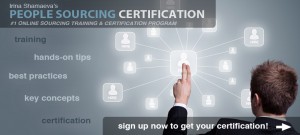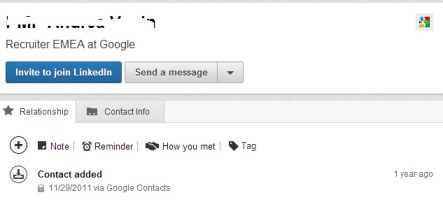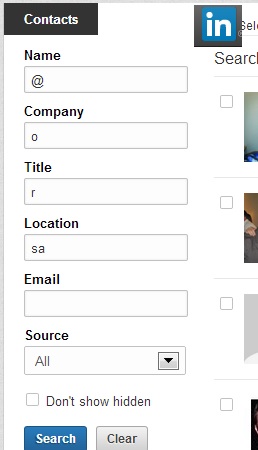June 14, 2013
For those of you who have been interested in the People Sourcing Certification Program, but haven’t taken the class yet, here is an update.
(If you are interested in listening to a shorter prerecorded webinar, take a look at the Training Library. If you would only like to read my posts on sourcing for now, please step back to the previous post; there’s more to come.)
The current class is in session. We got lots of positive feedback and praise from the previous classes*. Our attendance keeps growing and has included those who come for the second round and those who have been referred by happy past attendees.
In this round we have people from ten countries, including several large teams of corporate and of agency recruiters; these are the largest teams attending ever.
For this round we made big improvements to the Program, introducing providing much more granular modules and a better structure, as well as covering more content. (Getting everything up-to-date, along with restructuring, wasn’t easy, especially since LinkedIn and Google+ decided to redesign themselves just before the Program! That was lots of work preparing the most important and all up-to-date people sourcing content).
The “classroom” implementation of the program for the attendees is also an improvement; we hope you’ll join us next time to experience it firsthand.
 The updated People Sourcing Certification Program materials now include 9 (nine!) video-recorded modules with 9 slide sets for each level: the Level One (“the” level for most, teaching plenty of skills to use on a daily basis) and for the Level Two (the level for advanced sourcers), plus several “tip sheets” for each level.
The updated People Sourcing Certification Program materials now include 9 (nine!) video-recorded modules with 9 slide sets for each level: the Level One (“the” level for most, teaching plenty of skills to use on a daily basis) and for the Level Two (the level for advanced sourcers), plus several “tip sheets” for each level.
We will hold the next round in early October. In the meantime the packaged Program materials have just been updated on the site.
You can start raising your sourcing skills and expanding your toolbox by obtaining the Program Materials now and upgrade to the full program in October if you decide to do so. The materials come with two months of support from your Sourcing Teachers.
If your plan is to get certified, the earlier you get hold of the materials, the higher value you will get from the training.
As always, with any questions, please email our Customer Support Manager George Glikman at [email protected]
———————
*some quotes from the previous attendees:
“This is an amazing program… I have learned a ton and I am so thankful! I already think about sourcing differently and know this will definitely enable me to be even more effective and more productive in my recruiting role! Wow! “
” I have learned so much from this program and am so excited to implement so many of these techniques and strategies! This is so incredible and I cannot thank all of you at BrainGrain who have taken an interest in putting together such a program to help other recruiter’s like myself to be more effective in our careers! Although this exam has been difficult, I can already tell and am so excited about what I have learned! This whole sourcing concept makes so much more sense to me now.”
” I liked learning about all of the cool tools. Sourcing is really just a way of finding solutions to complex problems and new and unique tools are a great way to get around things”
“I really enjoyed the individual help offered to me.”
“Given my crazy work schedule and personal life (young kids) I especially enjoyed being able to listen to the webcasts on my own time and feel like I wasn’t missing anything.”
” I thought the program was excellent. Very informative and extremely useful. There were lots of great ideas and information / tools that were completely new to me, that I look forward to regularly using in my work. The support from George and David has been excellent as has all of Irina’s tips and extra sheets that she sends out during the course. “
“I really loved the program! I found it to be informative, and it really increased and built upon my existing sourcing skills. “


















